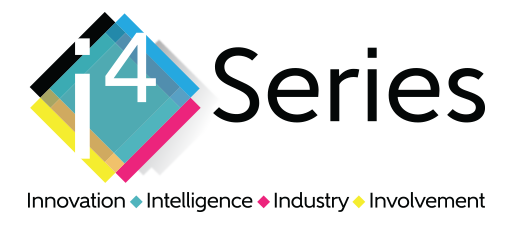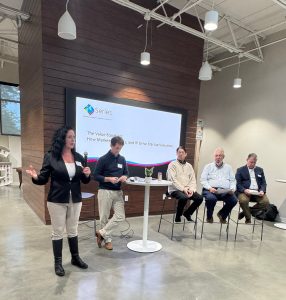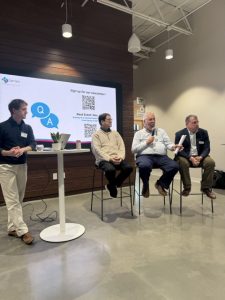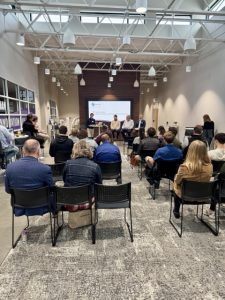How Markets, Metrics, and IP Drive Startup Valuations
Last night’s i4Series event brought together a powerhouse lineup of investors, academics, and startup veterans to tackle a deceptively simple question: What makes a company valuable? Moderated by Paul Clark, Managing Director of VentureSouth, the discussion was full of stories, lessons learned the hard way, and a few laughs about what not to do when you’re raising capital.
The Investor’s Reality Check
Entrepreneurship Professor Steve Stewart from Furman University opened the night by framing valuation as an act of prediction, “Investors are trying to assign a present value to a future possibility with very little proof.” Meaning, founders aren’t just selling a company. They’re selling probability.
Steve shared an acronym, FOCUS, as a way to think about what investors are really looking for:
- F – Founding Team: credible, coachable, and able to execute.
- O – Opportunity: a real problem with real demand.
- C – Clarity: no “if we get 1% of the market” slides.
- U – Uptake: letters of intent, early adopters, or respected advisors who lend credibility.
- S – Signals of Feasibility: certifications, demos, IP, and real data showing your solution works.
In other words, the less guessing an investor has to do, the higher your valuation climbs.
Intellectual Property Myths
Doug Kim, Attorney and Founder of the Kim, Lahey & Killough Law Firm called out one of the biggest misconceptions in entrepreneurship. He said, “There’s no such thing as the patent lottery. A patent doesn’t mean money just shows up in your mailbox.” Instead, he explained that intellectual property should be treated as a shield, not a slot machine. The point is to create defensibility. He says, “A thoughtful IP strategy can make an investor feel safer. It’s not the number of filings that matters; it’s showing you’ve thought about it. That’s what signals maturity.” Doug says even if a founder takes the initial steps toward getting a patent and decides not to go forward, it’s better than not having explored it at all.
Doug walked through how smart SaaS founders layer protection:
- Copyrights for the code (cheap and effective, but make sure your company, not your contractor, owns it).
- Patents for the functionality.
- Trade Secrets for the algorithms and processes you never want to reveal.
He shared a story about a client who blended all three to protect a warehouse-picking system. The founder later enjoyed, as Doug put it, “a very healthy exit.”
Market Research Matters
Charlie Marshall, Vice President for Strategex, shared cautionary tales of startups who built things that were brilliant, but not sellable. For example, one company developed a process to turn cotton scraps into glucose. The science worked beautifully. The economics didn’t. Corn was still cheaper. He says before perfecting your product, you should prove someone will actually pay for it. Market research beats wishful thinking.
Other panelists emphasized scalability. Can your company grow into new markets, new products, or new geographies without losing margins or your mind? If you really want to impress investors, show them distribution. “Anyone can build software,” one panelist said, “Not everyone can build distribution.”
Real Traction, Not Vanity Metrics
Everyone wants to know what proof actually counts. Investors want to see things that make your story real, like letters of intent, pilot programs, beta tests, certifications, paying customers, and customer interviews showing people want what you’re building.
Paul shared a story about a recycling startup that created a material strong enough to replace concrete. When their product passed compression testing at 3,300 psi, that single metric validated the entire business. “That number did more for their valuation than any pitch deck ever could,” he said.
Red Flags That Kill Deals
Of course, not all stories have happy endings. The panelists were candid about mistakes that make valuations crumble:
- Hidden tech debt discovered in due diligence.
- Unrealistic unit economics that collapse under real-world costs.
- Heavy customer concentration (four clients shouldn’t be 90% of your revenue).
- Missing or unclear IP ownership from contractors.
- And the biggest one: founders who claim they have “no competitors.”
As one investor said, “If you really have no competitors, you probably don’t have a market.”
The Art of Building to Be Bought
Even for founders not planning an exit anytime soon, the speakers urged everyone to build their businesses for that option. Think recurring revenue, clean financials, and processes that can run without you. Those things make you attractive to acquirers and investors. “Start thinking about your endgame early,” one speaker advised. “Not because you’re ready to sell, but because you should be ready to be bought.”
People Over Polish
The panel wrapped with a discussion about leadership and credibility. “Don’t confuse charisma with character,” Steve warned. “Elizabeth Holmes was charismatic. What we’re looking for is substance.” She’s the disgraced entrepreneur who gained notoriety as the founder and CEO of the fraudulent blood-testing company Theranos. She went from being hailed as a “self-made billionaire” and a visionary leader to being convicted of massive fraud for misleading investors about her company’s technology. Coachability, experience, humility, and a mentor who’s “been there before,” the panel agreed, are what separate flash-in-the-pan founders from ones who last.
The Bottom Line
Valuation isn’t just about revenue multiples or pitch decks. It’s about proof, protection, and a believable path to scale. Get those right, and you won’t need to convince anyone you’re valuable. They’ll see it for themselves.
Next Up: Evolving Your Financial Team for Growth: From Startup to Exit
Join us Tuesday, Jan. 27, for the first i4Series networking event of 2026!
Thank you to all of our i4Series Sponsors for helping make these events possible. Reach out to learn more about our mission to help educate and connect local business leaders and how your business can participate.




Recent Comments